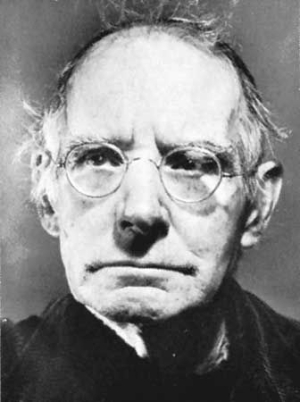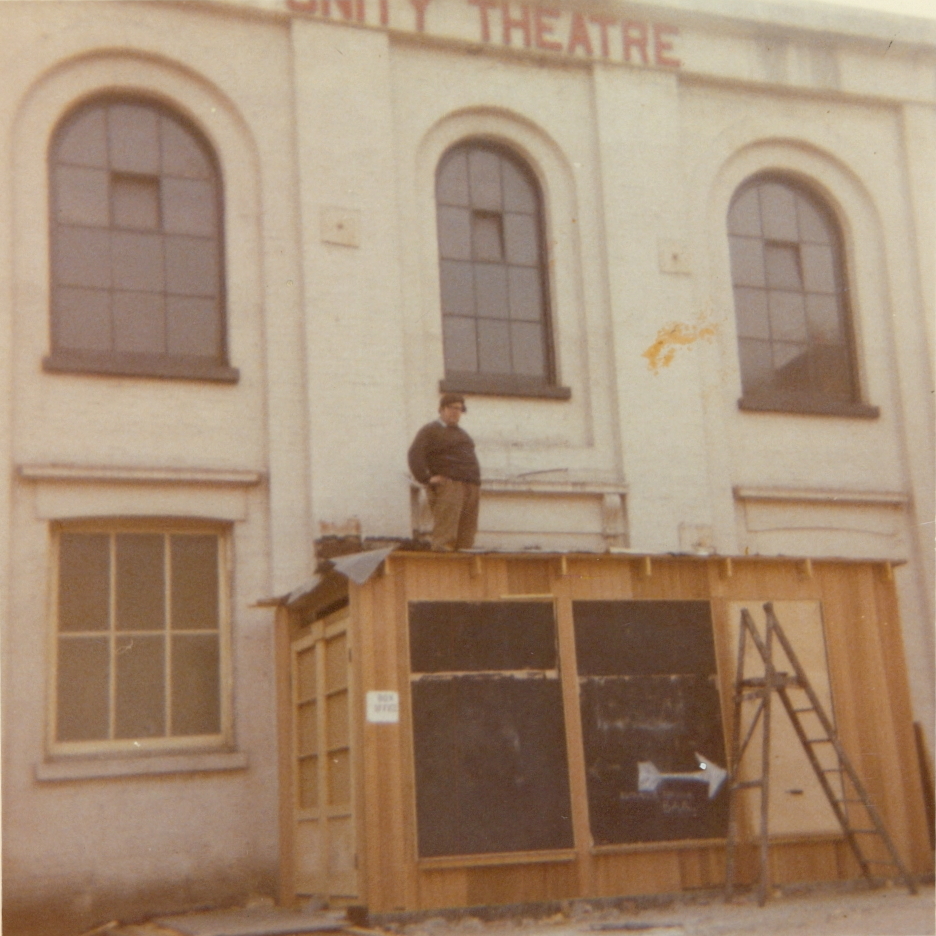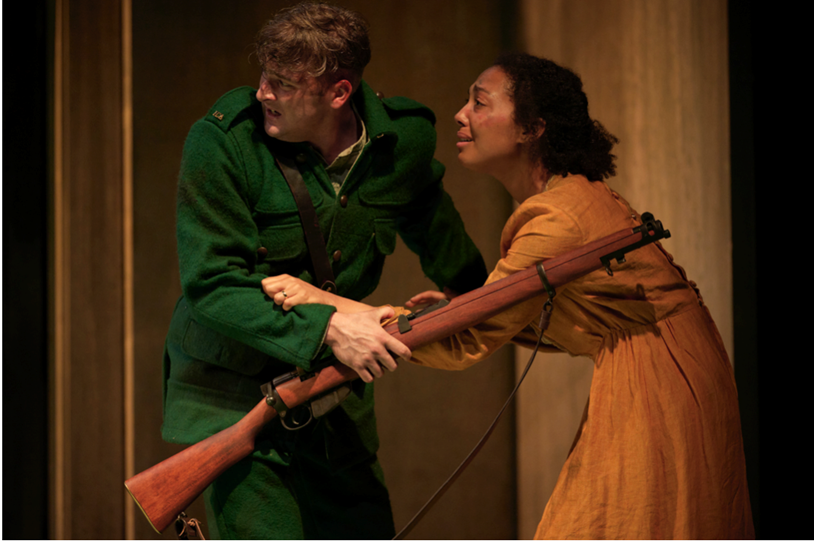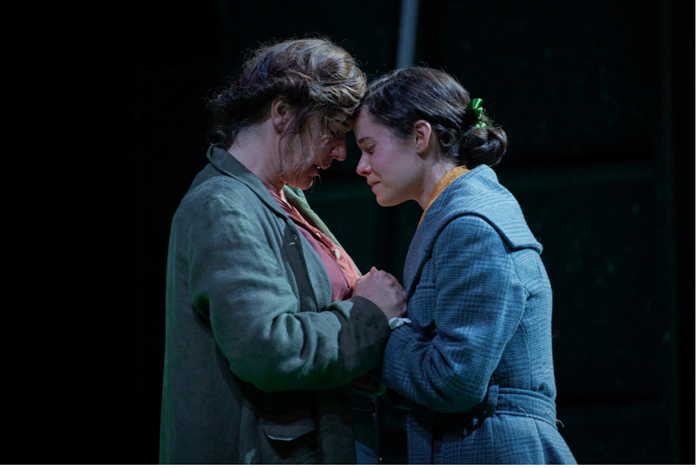
A hopeful vision of human renewal: the theatre of Seán O'Casey
The anniversary of Seán O’Casey's death falls on 18th September. He was the first English-speaking dramatist of international significance to emerge from the proletariat. His proletarian consciousness made his plays a significant part of Irish and international theatre history, securing their enduring relevance. O’Casey was not only a talented playwright but also a committed political activist. This dimension was not just a backdrop to his works but central to his creative output and is crucial to understanding his work. O’Casey saw his plays not merely as artistic creations but as weapons in the fight to create a new, truly humane society.
In the years before O’Casey turned to writing, he was deeply involved in national and class struggles in Ireland—as a proponent of Irish-speaking culture, a militant trade unionist, and a socialist activist. These experiences shaped his worldview. While politics defined O’Casey’s life, the craft of writing became equally important to him. Alongside influences like the legendary trade union leader Jim Larkin, Shakespeare and Charles Darwin, his fellow Dubliner Bernard Shaw had a lifelong impact on him, shaping his understanding of the connection between drama and politics. Shaw’s blend of sharp wit and creative humour was to become a hallmark of O’Casey’s own writing. Shaw had supported the locked-out Dublin workers in 1913 and spoke out against the executions of the leaders of the Easter Rising in 1916. O’Casey later stated that Shaw and Larkin were the two figures who most influenced his move to the left.
Despite his prolific output, O’Casey is known in Ireland and the English-speaking world almost exclusively for his Dublin Trilogy. These plays, with their portrayal of the working class as politically immature, were met with hostility by revolutionaries, particularly The Plough and the Stars. The later rejection of The Silver Tassie by Yeats in 1928 further contributed to O’Casey leaving Ireland permanently and moving to England, despite the role his plays had played in saving the Abbey Theatre from financial ruin at the beginning of the decade.
The establishment took issue with O’Casey’s thematic choices—his candid and satirical depiction of the church-state relationship in the Irish Free State in Cock-a-Doodle Dandy or The Bishop’s Bonfire, his examination of the 1929 economic crisis in Within the Gates, and his backing of the Spanish Republic in The Star Turns Red, where he highlighted the link between church and fascism—all of which were deeply objectionable to the Irish establishment. They distanced themselves from O’Casey, and although some of his later plays, like the acclaimed 1955 production of The Drums of Father Ned at the Gaiety Theatre, were occasionally performed, these works seldom saw the stage.
This stood in stark contrast to O’Casey’s reception in the socialist countries. The USSR celebrated his work, and his plays were frequently staged. As early as 1925, O’Casey was in contact with the Soviet cultural establishment and also met and admired Soviet filmmaker Sergei Eisenstein. His support for the Soviet Union grew stronger during and after World War II. His plays were performed not only in major theatres but also by working-class theatre groups across the country. In Germany, O’Casey was already known by 1931. After 1945, O’Casey was performed in both German states. In West Germany, there were disturbances during the performance of The Silver Tassie in 1953 over its anti-war message, and in 1968 the audience disrupted the staging of The Star Turns Red. In East Germany, however, O’Casey found very fertile ground at the Berliner Ensemble and the Deutsches Theater, and numerous other theatres throughout the republic also staged his plays. O’Casey was one of the most performed Western playwrights in the GDR.

The Unity Theatre in 1971
After moving to England, O’Casey remained politically active. In addition to writing plays, he worked closely with the London-based Unity Theatre, associated with the CPGB Daily Worker in the late 1930s. He expressed solidarity with the Spanish Republic and the Soviet Union, and in the early 1950s, he called for support of the Stockholm Appeal of the World Peace Council to ban the nuclear bomb, among other activities.
Like Brecht and other socialist and communist authors, O’Casey did not view theatre as merely a place for entertainment or escapism. His plays were intended to contribute to the emancipation of the Irish and the working population as a whole, to mobilise the necessary forces to create a truly human society. He achieved this without compromising the artistic value of his dramas. In the inseparable unity of his art with his political thought, the political content of O’Casey’s works did not diminish their artistic quality but rather strengthened them and produced a profound aesthetic effect.
Brecht’s epic theatre managed to bring the German playwright’s revolutionary political views and innovative theatre aesthetics to global influence. His practice of using the distancing effect to provoke critical thinking secured him a permanent place in the world of theatre. In contrast, Seán O’Casey’s influence remained relatively limited. Unlike Brecht, O’Casey’s dramas are more tied to the specific social and political struggles of the Irish people. However, O’Casey’s ability to integrate these profound, general themes into his dramas is a key reason for the enduring significance of his works. While his plays are firmly rooted in the social and political realities of Ireland during his time, the underlying ideas—such as the fight against oppression, the quest for social justice, and the pursuit of human dignity—address universal human experiences that remain relevant in other contexts and at other times.
O’Casey attached fundamental importance to the written word in his dramas. He believed that the text, as written by the playwright, is the central element of any theatre production and should not be seen as mere raw material to be altered at the director’s whim. For him, the text was the foundation on which the entire theatrical realization is based, and he saw the task of staging as accurately and effectively implementing the artistic content contained in the text. This position is also underscored by his detailed stage directions, which show that he had clear ideas about how certain scenes, dialogues, and characters should appear, viewing the theatrical performance as an extension and realization of the written word, not as its transformation or reinterpretation.
In his early works, particularly in the Dublin Trilogy (The Shadow of a Gunman, Juno and the Paycock, The Plough and the Stars), O’Casey’s realism is distinctly traditional. However, later, O’Casey began to develop his style further and experiment with new forms of artistic modernism. Examples of this can be found in plays like The Silver Tassie, Cock-a-Doodle Dandy, or Red Roses for Me, where O’Casey uses complex symbolic imagery and fantastical scenarios to explore reality. This way, O’Casey’s later works expand and deepen his artistic expression without losing their connection to reality. He created a more complex and richer theatrical language, allowing him to convey deep human and social themes in new and powerful ways.
One of the recurring themes in O’Casey’s work is the question of revolution. While in his early Dublin plays, especially after the loss of their leadership in 1916 through execution by the British colonial power, he controversially considered the Irish working class not yet ready for revolutionary change, his later works explore the potential for fundamental change. A look at his second last work, Figuro in the Night (1961), illustrates this.
The thematic focus of O’Casey’s play Figuro in the Night lies on revolution and liberation. The play is set in a new suburb of Dublin, flanked by two monuments — one commemorating the fallen Irish who served in the British Army during World War I, the other honouring those who died for Irish liberation. Both monuments document death.
The arrival of a third sculpture, a “Manneken Pis” statue in the city center (in O’Connell Street), introduces a new note. The cheerful figure causes a stir and celebrates natural human needs. In O’Casey’s play, it becomes a catalyst for a revolutionary uprising, where the people—especially the youth—overthrow the old order in a joyful, almost carnivalesque manner. The playwright uses this figure to portray the joy of human bodily functions and zest for life, highlighting the central importance of vitality and renewal for revolution and liberation.
He focuses on the human dimension of the revolution, emphasizing the liberation and reintegration into the nature of the whole person. This revolutionary vision emerges as a necessary antidote to the despair and life-denial of the contemporary world, offering hope and a strategic perspective for revolutionaries. The play is also a polemic against writers like George Orwell, who portrayed revolution negatively. Instead, O’Casey celebrates it as a carnival of life.
Figuro in the Night uses imagination and the fantastic to depict a moment of complete social upheaval, in which the rules of society are turned upside down, and the creative imagination of the masses is unleashed. The tension in the play lies in the conflict between suppressed human needs and the inhibiting forces of false consciousness, with the former eventually undermining the latter to achieve liberation.
Sexual liberation and political liberation
The uprising of the humanized senses, particularly sensuality, is thus central to O’Casey’s portrayal of human liberation. This sensuality, which has evolved throughout history, forms the core of humanity, deeply rooted in the masses, and cannot be indefinitely suppressed by restrictive moral constraints. O’Casey uses sexuality as a potent symbol for the broader, deeply rooted liberation of humanity, without making it into an absolute, ultimate goal. The sensual relationship between women and men becomes the measure of humanity’s progress, intertwining the natural with the human. This aligns with Marx’s view:
The relation of man to woman is the most genuine relation of human being to human being. It therefore reveals the extent to which man’s natural behaviour has become human, or the extent to which the human essence in him has become his natural essence.
- Marx, Private Property and Communism, 1844
The drama explores how internal subversion, even small signs of change, can lead to significant transformations. The young women, particularly the girl in the opening scene, are catalysts for this change, expressing the new spirit through song. This suggests a generational shift, with the younger generation refusing to repeat the mistakes of their elders. The folksong “Oh dear, what can the matter be”, with its image of blue ribbons that a young man is to bring home from the fair for his sweetheart, runs as a leitmotif throughout the play.
The older characters, represented by the Old Man and Old Woman, may outwardly resist but are also influenced by the rising vitality of life. Although their liberation is incomplete, it represents a partial victory of sensuality even in those most attached to the old ways. Their speech, laced with references to popular songs and love ballads, subtly undermines their supposed disdain for sensuality, embodying a resurgence of human expression and rebellion against repression. Through rhythmic and poetic language, O’Casey expresses this upheaval, with the Old Woman particularly challenging traditional roles and presenting a growing, revolutionary perspective on human progress.
Thus, the world depicted in the play, despite its degeneration, is not portrayed as dead but rather as ripe for revolution, with the sensual-emotional uprising serving as a catalyst for broader changes. The drama suggests that life is full of potential for change, needing only the right spark.
By portraying the themes of revolution, transformation, and the power of human nature, O’Casey shows how pent-up energies and suppressed human instincts are unleashed during a spontaneous festival, embodying a broader social upheaval. O’Casey often uses communal festivities as focal points in his plays. However, unlike earlier celebrations, often controlled by oppressive forces such as the church or state, this festivity is secular, rooted in pagan traditions, and represents a genuine carnival of life. The connection to pagan roots is particularly evident in how this fountain of life can be traced back to a tradition of pagan water god worship, associated with ecstatic rituals that were initially suppressed and the wells later appropriated by the Catholic Church. Here, they reclaim their rights, and people seamlessly identify with this source of life.
This upheaval transforms a subdued suburban area into a blooming garden, symbolizing humanity’s return to a new Eden. This Eden, unlike the Christian Garden of Eden, is one that humanity regains after experiencing and overcoming hardships. It is a place full of vitality and joy, where humanity takes its destiny into its own hands.
In contrast to the world depicted in The Plough and the Stars, where insurrection is portrayed as a distant event that brought only destruction and despair to the people, this later work shows a revolution in which the people actively participate. This upheaval, with its emphasis on the joy of life, brings profound and lasting changes to human relationships, a recurrent theme in O’Casey’s work.
The older characters in the play have a distorted perception of reality. They see the vibrant transformation of the world around them as decline and fear change. Yet, despite their resistance, their physical senses betray them, and they involuntarily become participants in the revolution they seem to reject. While the corrupt journalists—the Blind and the Deaf—cannot grasp the transformative power of the revolution, the old men, despite their weaknesses, are ultimately touched by it.
The character of the Birdlike Lad embodies the union of human and nature and serves as a messenger connecting the local events of the play with a broader revolutionary context. He emphasizes that the uprising is not confined to one place but spreads universally, even reaching the highest power structures in the form of the bishops, who now themselves sing love songs. “Oh dear, what can the matter be”, referenced repeatedly in song, speech, and images of blue ribbons, receives a completely new ending at the drama’s conclusion. The song’s story is finished, the young love —both in the song and in ‘reality’—brings the longed-for blue hair ribbons from the market for his beloved, who then invites him into her home. The longing is fulfilled, becomes reality, on stage.
The play ends with the consolidation of the revolution. The ecstatic energy of the initial uprising gives way to a new order, expressed through the characters forming an organized, majestic dance. This transformation from chaos to order reflects the merging of discipline with the poetry of life, suggesting that the rebellion has established a new, harmonious social order.
Thus, Figuro in the Night portrays the revolution in O’Casey’s play as a powerful, transformative force that liberates suppressed human energies, revitalizes society, and reclaims a new Eden. Ultimately, the play offers a hopeful vision of human renewal and the possibility of a life-affirming social order.




